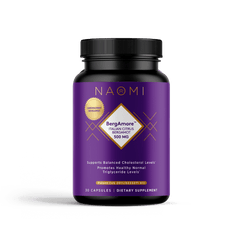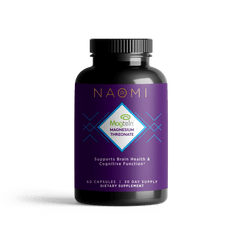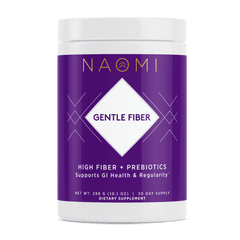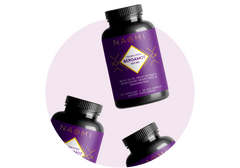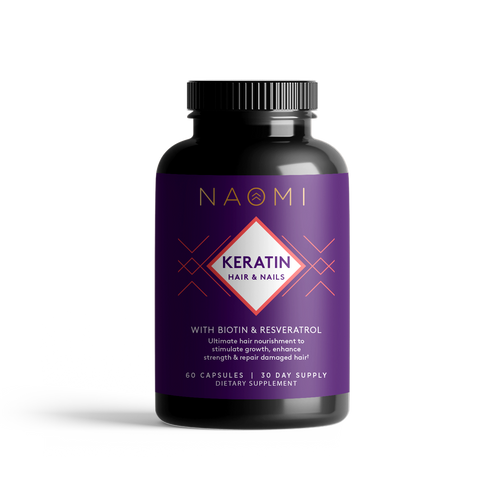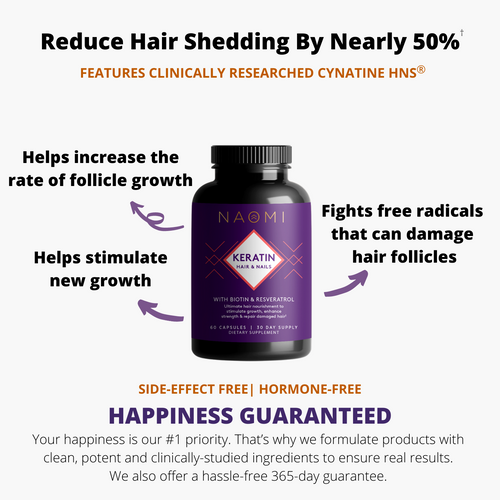Keratin: A Guide to Healthy Hair

Keratin is an insoluble protein found in epidermal tissues, such as skin, nails, and hair, and it is what helps give them strength, structure, and resilience to protect against damage and trauma.[*][*] For that reason, keratin treatment has shown to have a positive role in our beauty and health. That’s important for many reasons. One, it helps improve your overall glow, as we all know how much skin, hair, and nails can have an effect on how we look. But what I appreciate even more is that healthy hair and nails are not just about looks, but about feel. The confidence you feel. The strength you feel. The inner glow that comes with your outer glow. Best of all, you don’t have to think of the protein as just keratin for hair, but other things as well. As a matter of fact, keratin has also been shown to be a strong aid when it comes to wound healing.
What is Keratin?
The technical keratin definition is that it is an insoluble protein found in the epidermal tissues of vertebrae.[*] Keratin comes from the Greek word meaning horn (fun fact: keratin is found in other outer tissues, like a rhino’s horn, sheep’s horn, as well as various feathers, beaks, and claws).[*] These keratin proteins are tough and fibrous; that’s because they form the structural framework of the cells that line the surfaces of organs, canals, and cavities (these are called epithelial cells).[*] By the way, keratinization is the process in which cells from under the skin convert into hair and nails.
How Keratin Works
While keratin has been found in internal organs and has a role in cell movement,[*] it is primarily associated with these three areas:
Hair
Keratin is what makes up the hair shaft.[*] Because it is the foundation of hair, you will often find products like keratin hair treatment and keratin shampoo/conditioner. Why do we need to boost keratin? As we age, we experience a decline in the production of keratin. In chemical terms, that weakening leads to the deterioration of stability and flexibility in the hair shaft.[*] In look-in-the-mirror terms, that makes your hair susceptible to dryness and breakage, especially when using brushes or styling products.
Important note:
A keratin treatment that uses a cream that contains formaldehyde is not recommended, as this colorless gas can be harmful when inhaled or absorbed by the skin.[*] This happens when the cream with formaldehyde (or another chemical that releases an amount of formaldehyde) is brushed into the hair and then a high heat blow dry and flat iron makes frizzy hair and curly hair more relaxed. Things like Brazilian keratin treatments and Keratin Complex Smoothing Therapy have been deemed dangerous by the Occupational Safety & Health Administration, so formaldehyde free treatments are recommended.[*][*][*]
Nails
Your nerves before a public talk aren’t the only thing that puts your nails at risk. When you lose keratin (a natural part of aging), that can cause your nails to become brittle, discolored (yellow, gray, or dull), as well as lead to splitting or cracking.[*][*] In addition, your nail can lose keratin for other reasons, such as change in circulatory system (meaning nutrients may not be able to get to the nails, exposure to chemicals and cosmetics, and repetitive cycles of wetting and drying.[*][*]
Skin
Your skin is your biological raincoat. And the reason why your skin is waterproof? Keratin. The strong and flexible fibers make your skin strong against tearing and penetration,[*][*] and it’s what also makes your skin supple and flexible (that’s because it also helps you retain the water you do have to give your skin that glowing appearance). As part of the normal aging process, keratin production decreases, which is what can result in dry and dull skin (which can cause itching and irritation).[*]
Landmarks of Keratin Research
There has been documented use of keratin treatments for thousands of years. They have come in the form of animal skin as protection (the keratin provided strength to the skin) to horns and nails being used as weapons or utensils.[*]
For medicinal purposes, the first use is believed to have come from a Chinese herbalist named Li Shin-Zhen. He wrote some 800 books over four decades and published more than 11,000 prescriptions to medical problems. One of those was for a substance that aided in wound healing using ground ash and human hair. This treatment was known as Crinis Carbonisatus.[*]
More recently, research has centered around keratin in cosmetics, wound healing, medical devices and drugs, and even tissue engineering.[*][*]
Other Health Benefits of Keratin: Wound Healing
Besides giving strength and structure to your hair, nail, and skin, keratin also can act as an aid to healing wounds. It has been found to help aid healing in superficial cuts, surgical wounds, leg ulcers, diabetic foot ulcers, first- and second-degree burns, as well as skin grafts.[*] It does this by helping to stimulate cell growth and getting healthy cells to the affected area.[*]
One animal study shows that bandages using keratin sped up healing and had a better outcome with scars, and another study showed that keratin helped the wound have a “better-organized structure of regenerated tissue.”[*][*]
How does it work? Keratin dressings release peptides (which are chains of protein) into the wound. These activate skin cells in the wound bed that forms the epidermis and produces keratin; that then stimulates them to proliferate and heal the wound with regenerated tissue by stimulating fibroblasts, which produce collagen and elastin—two components that makeup skin.[*] Some examples of treatments include keratin-rich gels or ointments, or keratin matrix dressing for wounds that produce fluid (like blisters).[*]
Keratin Supplements
One way to think about keratin treatment at home is through supplementation. A survey of health professionals found that 66 percent of 300 dermatologists recommended dietary supplements to patients for skin, hair, and nail health; 79 percent of them personally used supplements.[*]
Extracted from New Zealand sheep’s wool, Cynatine HNS is an ingredient in supplements and beauty products that contains solubilized keratin in a highly bioavailable, peptide form.[*] Cynatine HNS’s high bioavailability makes it capable of delivering keratin to our hair, skin, and nails.[*] A look at the keratin treatment before and after will give you a glimpse into how it can work.
In one study, dermatologists gave 500 mg keratin supplements daily, containing Cynatine HNS, to 50 women. These women were tested on measured hair loss, hair growth, hair strength, hair luster, and amino acid composition, as well as nail strength and appearance all, compared to a placebo group.[*]
The results showed:
- 17 percent improvement in hair strength after 30 days
- 39 percent improvement in hair strength after 60 days
- 47 percent improvement in hair strength after 90 days
- 80 percent had an improvement in nail strength, smoothness, and whiteness after 90 days
Another study showed improvement in skin moisture, smoothness, and elasticity after 90 days of keratin, and they showed an 11 percent decrease in wrinkle depth after 90 days.[*]
Supplement Guidelines
In most studies that had prominent results, participants were given 500 mg daily or 250 mg twice daily.[*][*] Excess keratin can result in thick, rough, and dry skin.[*]
Foods That Boost Keratin
When shopping for food, add these to your ingredient list.[*][*]
1. Protein-rich foods:
Eating protein-rich foods provide the amino acid building blocks required for the synthesis of some structural proteins in our body, specifically keratin.
✓ Red meat, fish, yogurt, eggs, milk, nuts
2. Biotin-rich foods
Biotin is required for the metabolism of amino acids required to build keratin; biotin also reinforces keratin’s nail and hair strengthening abilities.
✓ Nuts, cauliflower, mushrooms, cooked yolks, salmon, avocado
3. Vitamin A-rich foods
Synthesis of keratin is dependent on vitamin A.
✓ Cooked greens (kale, collards, and spinach), broccoli, herring, liver
Note: Vitamin A is fat soluble, so it gets better absorption in digestion with fatty foods.
4. Vitamin D-rich foods:
Keratin synthesis is also dependent on vitamin D; it regulates the development and growth of keratinocytes.
✓ Tuna, salmon, raw milk, mushrooms, eggs
5. Omega 3 Essential Fats:
Essential fatty acids regulate nearly every process in your body, like keratin production; also can offset the negative effects of stress on your hair and skin.
✓ Salmon, mackerel, tuna, nuts
6. Zinc-rich foods:
Keratin is dependent on zinc for synthesis. Zinc also boosts collagen production and skin elasticity; zinc deficiency can result in hair loss, dry skin, brittle nails, and fatigue.
✓ Red meat, crab, almonds, milk, cheese, dark chocolate
Keratin Summary:
Keratin is an insoluble protein that provides strength and structure to hair, nail, and skin. We lose keratin as we age, which can lead to damage to those structures.
Keratin has also been shown to play a role in wound healing, as they help accelerate the healing process through their function to form cells.
A variety of foods can help boost the function of keratin, and keratin supplementation has been shown to help improve the health and strength of hair, skin, and nails.

